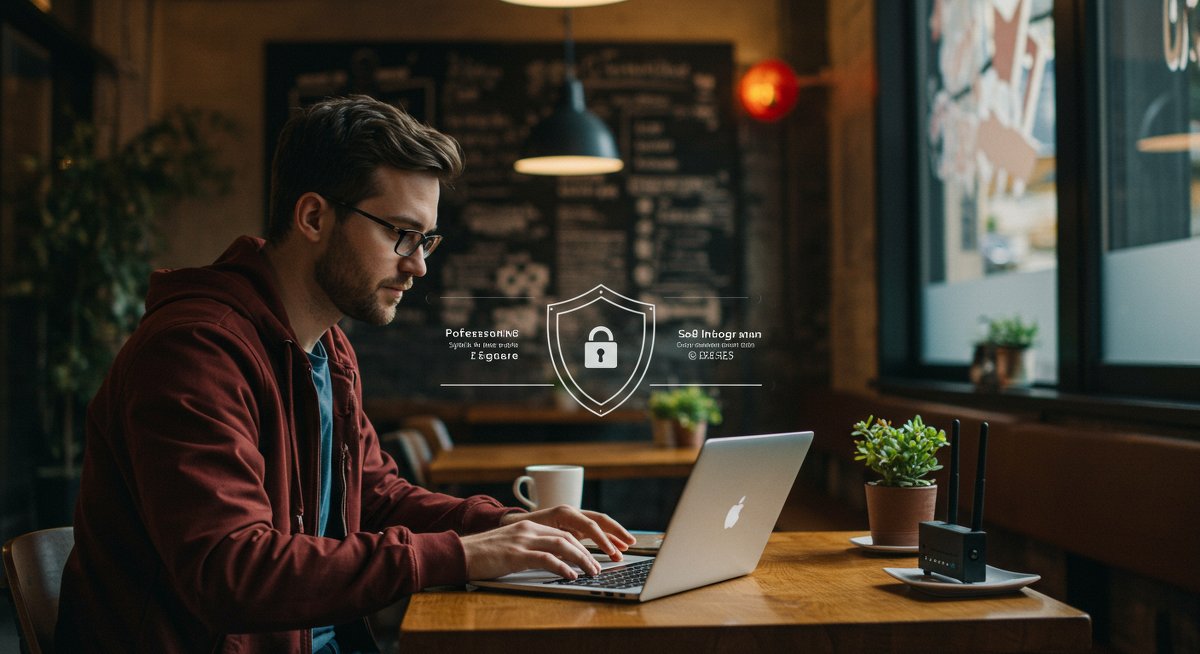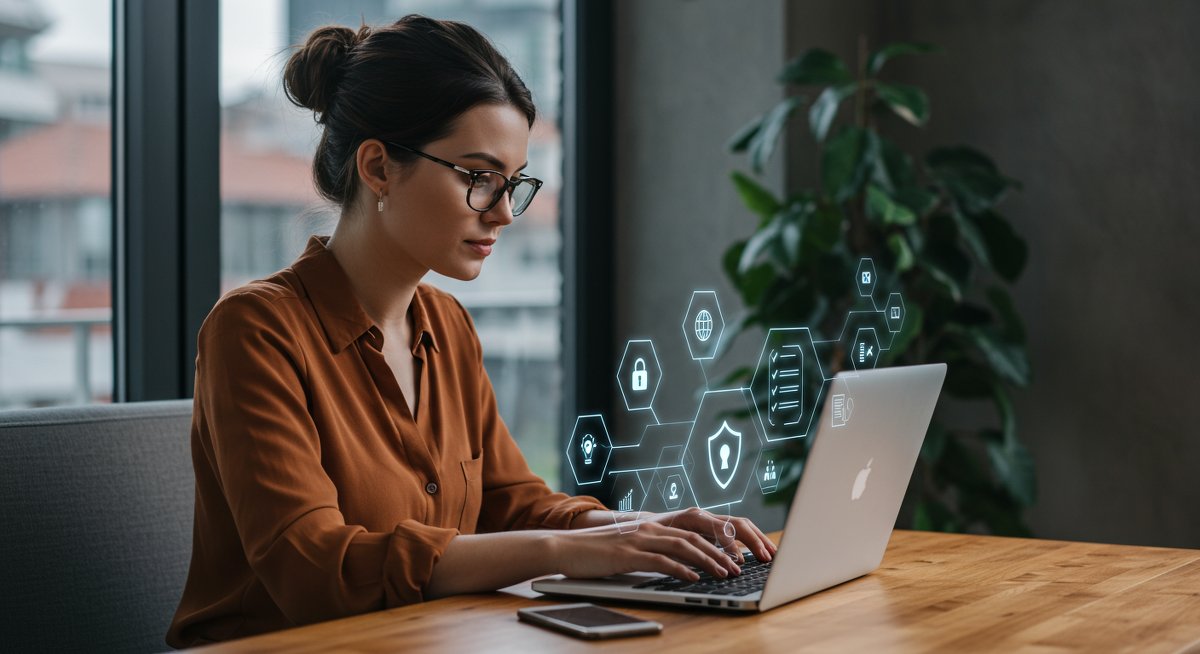
Why Embracing Cybersecurity Matters for Your Nomad Journey
In today's interconnected world, the digital nomad lifestyle offers unparalleled freedom. However, this freedom comes with increased exposure to cybersecurity threats. As a digital nomad, you're constantly connecting to different networks, handling sensitive data, and often working in public spaces. This guide provides a comprehensive cybersecurity checklist for 2025, designed to protect your digital life and ensure your peace of mind while you explore the world. By implementing these essential steps, you can mitigate risks and safeguard your personal and professional information.
One of the most significant risks is using public Wi-Fi. Cybercriminals often exploit vulnerabilities in public networks to steal data. Another major threat involves phishing attacks, where malicious actors impersonate trusted entities to trick you into revealing personal information. Finally, the loss or theft of devices can lead to severe data breaches if proper security measures are not in place.
This checklist is designed for beginner nomads, providing a foundational understanding of cybersecurity principles. It emphasizes practical steps that are easy to implement, ensuring that even those new to the digital nomad world can confidently navigate the online landscape. By following this guide, you'll be well-equipped to enjoy the benefits of remote work without compromising your security.
Essential First Steps to Become a Digital Nomad
Before you embark on your nomad journey, certain initial steps are crucial to establish a secure digital foundation.
Choose Strong, Unique Passwords:
- Explanation: Your passwords are the first line of defense. Avoid using easily guessable information like birthdays or common words. Instead, create strong, unique passwords for each of your accounts.
- Example: Use a combination of uppercase and lowercase letters, numbers, and symbols. Aim for at least 12 characters. Never reuse passwords across multiple sites.
- Tool: Consider using a password manager like NordPass to generate, store, and manage your passwords securely.
- Tip: Regularly update your passwords, especially for critical accounts like email and banking.
Enable Two-Factor Authentication (2FA):
- Explanation: 2FA adds an extra layer of security by requiring a second verification method, such as a code from your phone, in addition to your password.
- Example: Enable 2FA on all accounts that offer it, including email, social media, banking, and cloud storage.
- Tip: Use authenticator apps (like Google Authenticator or Authy) instead of SMS for 2FA to prevent SIM swapping attacks.
Secure Your Devices:
- Explanation: Protect all your devices (laptops, smartphones, tablets) with strong passcodes and enable security features.
- Example: Set a strong passcode or use biometric authentication (fingerprint or facial recognition) on your devices. Keep your operating systems and software up to date to patch security vulnerabilities.
- Tool: Ensure your devices are equipped with up-to-date antivirus software.
- Mistake: Leaving your devices unlocked in public places significantly increases your risk.
Common Beginner Challenges & How to Overcome Them
New digital nomads often face specific cybersecurity challenges. Here's how to overcome them.
Public Wi-Fi Risks:
- Challenge: Public Wi-Fi networks are inherently insecure and can be easily intercepted by malicious actors.
- Solution: Always use a VPN (Virtual Private Network) when connecting to public Wi-Fi. A VPN encrypts your internet traffic, making it unreadable to eavesdroppers.
- Example: When working from a cafe, always connect to your VPN before opening any web browsers or apps.
- Tool: Use a reliable VPN provider like Surfshark.
- Mistake: Not using a VPN on public networks is a major vulnerability.
Phishing Attacks:
- Challenge: Phishing emails and messages are designed to trick you into revealing sensitive information.
- Solution: Be wary of unsolicited emails and messages. Always verify the sender's email address and be cautious of links and attachments.
- Example: Before clicking on a link in an email, hover over it to see the actual URL. If the URL looks suspicious, don't click it.
- Tip: Install a phishing protection tool on your browser.
- Pitfall: Clicking on a fake login page and entering your credentials is a common trap.
Device Theft/Loss:
- Challenge: Losing a device can expose your data to unauthorized access.
- Solution: Enable remote device tracking and data wiping features. Back up your data regularly.
- Example: Use services like Find My iPhone or Find My Device (Android) to locate or remotely wipe your devices if they are lost or stolen. Back up your data regularly to a secure cloud service.
- Tip: Always lock your devices with a strong passcode or biometric authentication.
Tips for Success (e.g., budgeting, finding remote jobs)
To maximize your cybersecurity while traveling, here are some practical tips.
Use a VPN Consistently:
- Explanation: A VPN encrypts your internet traffic, making it secure on public Wi-Fi. Choose a reputable VPN provider that offers strong encryption and a no-logs policy.
- Example: Set your VPN to automatically connect whenever you join a new network.
- Tip: Test your VPN's security by checking for DNS leaks at dnsleaktest.com.
Keep Software Updated:
- Explanation: Regularly update your operating systems, web browsers, and all software applications. Updates often include security patches that fix vulnerabilities.
- Example: Enable automatic updates on your devices.
- Tip: Be vigilant about updating all plugins and add-ons installed in your browsers.
Secure Your Email:
- Explanation: Your email account is a gateway to many other accounts. Protect it with a strong password, 2FA, and a secure email provider.
- Example: Use a reputable email provider like ProtonMail, which offers end-to-end encryption.
- Tip: Regularly review the devices and locations that have access to your email account.

Practice Safe Browsing:
- Explanation: Avoid visiting suspicious websites and be careful about what you click. Install a web browser extension to block ads and trackers.
- Example: Always check the URL before entering any sensitive information.
- Tip: Use a privacy-focused browser like Brave, which blocks trackers and ads by default.
Back Up Your Data Regularly:
- Explanation: Back up your data regularly to a secure cloud storage service or external hard drive. This will protect your data in case of device loss or theft.
- Example: Schedule automatic backups of your important files and documents.
- Tool: Utilize cloud storage services like Dropbox or Google Drive.
Be Aware of Your Surroundings:
- Explanation: Always be mindful of your surroundings when working in public places. Avoid leaving your devices unattended and protect your screen from prying eyes.
- Example: Use a privacy screen protector on your laptop and avoid discussing sensitive information in public.
- Tip: Consider using a portable laptop privacy screen.
Recommended Resources for New Nomads
For those new to cybersecurity and the digital nomad lifestyle, here are some recommended resources.
- Cybersecurity Blogs: Follow cybersecurity blogs such as Krebs on Security and Brian Krebs for the latest news and advice on online security.
- Password Managers: Utilize password managers to generate and securely store strong passwords. Look for password managers like NordPass or 1Password.
- VPN Providers: Subscribe to a reliable VPN provider to encrypt your internet traffic, especially when using public Wi-Fi. Surfshark and ExpressVPN are both highly recommended.
- Cloud Storage Services: Use cloud storage services such as Dropbox, Google Drive or iCloud to backup files and documents.
Quick Wins for Your First Nomad Trip
Before you embark on your first digital nomad trip, take these quick steps to improve your security.
- Install a VPN: Set up and test your VPN before you leave. Ensure it connects properly and encrypts your traffic.
- Enable 2FA: Enable two-factor authentication on all your important accounts.
- Back Up Your Data: Back up your essential files and documents to a secure cloud storage service.
- Create Strong Passwords: Make sure all of your passwords are secure.
- Secure Your Devices: Set a passcode or use biometric authentication on all your devices.
Next Steps in Your Location Independent Life
As you continue your digital nomad journey, keep these points in mind to stay secure.
- Stay Informed: Continuously educate yourself on the latest cybersecurity threats and best practices.
- Review and Update: Regularly review your security measures and update them as needed.
- Be Vigilant: Stay vigilant about potential threats and always be cautious when working online.
- Implement all steps: Ensure you implement all the steps listed above to keep yourself safe.